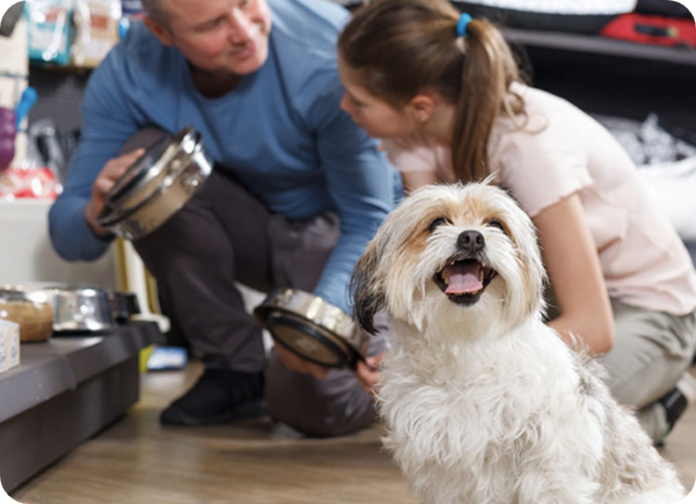Dogs can vomit for various reasons, such as diet changes, human food consumption, eating too quickly, scavenging, or motion sickness.
Yet, it might be a symptom of a more serious health issue, such as an infection, cancer, pancreatic disease, consuming a poisonous plant or flower, or eating a foreign object.
When vomiting strikes, you must take action to protect your dog’s health and longevity. Read this step-by-step guide to caring for a vomiting dog.
Step 1: Withhold Food and Water
Withhold food and water for the first two hours after your dog starts vomiting.
After two hours pass, you can reintroduce a small amount of water every half an hour, providing a few tablespoons each time. However, you must withhold food for another six to eight hours.
If your dog has stopped vomiting, provide them with one to three tablespoons of low-fat, cooked, bland foods, such as white fish or chicken with rice or pasta, every one to two hours.
Avoid serving raw meat, fatty foods, or dairy to avoid further illness. If your pet appears fine, you can resume its normal diet the next day.
Bear in mind you must not withhold water for longer than a few hours after they first start vomiting to prevent dehydration.
Encourage your canine to drink a little and often throughout the day to remain hydrated when vomiting.
If your pet doesn’t want to drink, you must speak to a vet about the issue to ensure they receive the appropriate treatment.
Step 2: Visit a Vet
If your dog struggles with persistent vomiting or illness, you mustn’t hesitate to take them to a vet.
A qualified vet will perform a clinical examination and ask various questions about your dog to gain an understanding of their health.
Also, they may perform blood tests, x-rays, urine tests, or an ultrasound to get to the root cause of their vomiting.
Visit easyvet.com to find an affordable, convenient, and dependable local clinic near you for a walk-in or scheduled appointment.
Step 3: Allow Your Dog to Rest
Once your dog has received a diagnosis and treatment from a qualified veterinarian, you must help your canine to rest.
As they aren’t feeling well, your dog will unlikely have much energy to move around the home or go for a walk.
You might need to skip their daily walk for a couple of days to allow them to relax and recover at home.
Rest combined with a prescribed medication might be enough to help your pooch recover within a matter of days.
Step 4: Return to a Vet
If your pet still feels poorly or continues to vomit, return to a veterinarian for another exam and treatment.
A vet will be eager to help your dog overcome a health issue as much as you and may need to order more tests or change their medication.
The sooner your pooch receives the treatment they need, the sooner it will make a full recovery.

